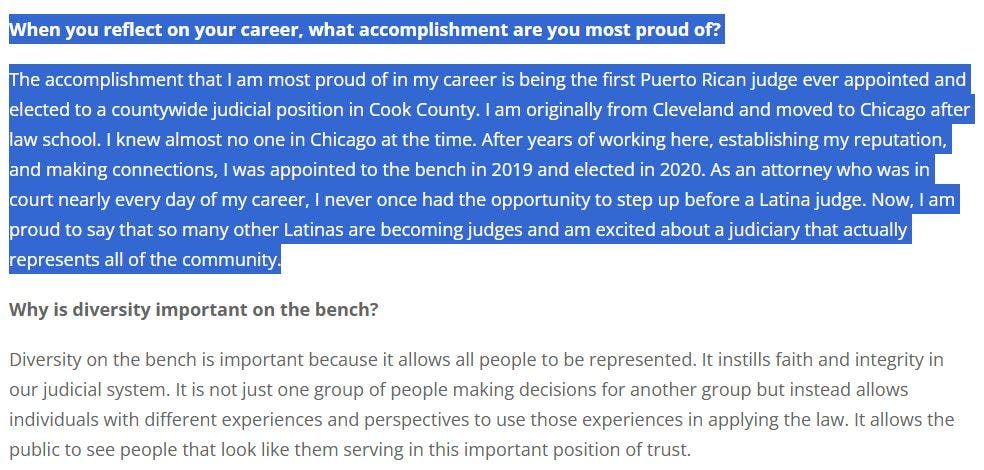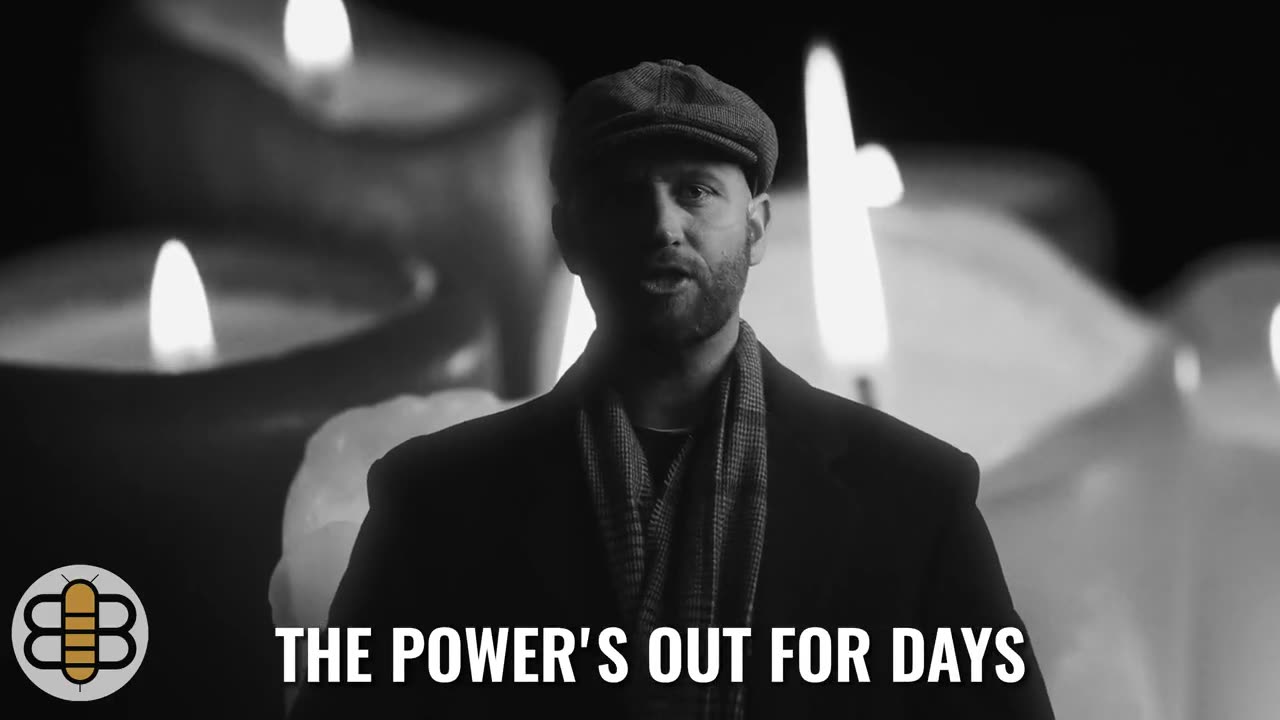Career Criminal Freed By Radical Pro-Crime Judge Sets Christian Woman On Fire On Subway

At 9:24 PM on November 17, a 26-year-old white woman named Bethany MaGee was sitting on a seat in the middle of a Chicago Transit Authority train car. She was looking through her phone, not paying much attention to her surroundings. At the same time, a 50-year-old black man named Lawrence Reed, who had 72 prior arrests and 15 prior convictions (including nine felony convictions, for crimes including arson, aggravated battery, and drug trafficking), was seated at the far back of the CTA car.

Credit: United States District Court Northern District Of Illinois Eastern Division/Chicago Transit Authority security camera/HighSentry360-34
To give you a sense of the distance between these two passengers on the train, in this image, the woman is circled on the right, and Reed is circled on the far left, at the bottom of the screenshot. So they’re not far away from one another. And in case it’s not clear, the woman is seated with her back towards Reed. She’s completely defenseless.

Credit: GoFundMe
Before long, Reed stands up, walks toward the woman, and begins pouring gasoline all over her body. He had purchased the gasoline just 20 minutes earlier, from a local Citgo station. Although the woman was able to briefly fight Reed off, he managed to ignite the bottle of gasoline in his hand using a lighter, run towards the woman, and set her on fire. He then watched, from across the CTA car, as her entire body was engulfed in flames.

Credit: United States District Court Northern District of Illinois Eastern Division/Chicago Transit Authority security camera
The woman attempted to roll around on the ground to extinguish the flames before exiting the car when it pulled up to the station. She then collapsed on the platform, gravely injured, with burns to her face and body. She ultimately went to the hospital in critical condition, where she’s now expected to remain for several months. Lawrence Reed casually walked away, as if nothing had happened.

Credit: United States District Court Northern District of Illinois Eastern Division/Chicago Transit Authority security camera
When detectives arrested Reed the next morning, they read him his rights and began transporting him back to the station for questioning. While in transit, without any prompting from the officers, he celebrated what he had done, and began taunting his victim. He yelled, “Burn b—,” and “Burn alive, b—.”
Put another way: Just three months after a young white woman named Iryna Zarutska was murdered on public transit by a black man with more than a dozen prior arrests, who attacked her from behind while she was using her phone, left her for dead, and taunted her after-the-fact, yet another young white woman has been violently assaulted on public transit by a black man with an even longer rap sheet, who also attacked her from behind while she was on her phone, and who also taunted her after-the-fact.
This is a story of black-on-white violence that you’ve almost certainly heard about by now. We briefly mentioned it last week. But it merits a much more in-depth discussion than it’s received in the national media. Already, for the most part, mainstream outlets have moved on. If a white man had violently attacked black woman on the train for the second time in three months, of course, all of these outlets would be encouraging rioters to level the entire city of Chicago within 24 hours. (Not that the encouragement would probably be necessary). But as it stands, you can search the name “Bethany MaGee” on CNN’s website, and you won’t find a single result.
To the extent the case is receiving coverage at all, it’s mostly from local news stations, who are eager to inform us that Lawrence Reed is suffering from some kind of mental illness.
Watch:
Credit: @ABC7Chicago/YouTube.com
It’s almost beyond parody. If the crime wasn’t so horrific, you’d have to laugh. The career felon lies in wait on a train car. He deliberately attacks the most vulnerable white woman he can find on the train — a woman who’s completely defenseless. Then he runs away, demonstrating a clear awareness that he had just committed a crime. And then when he’s caught, he mocks the victim. When he’s brought before a judge, he admits that he’s guilty — just like he was guilty all of those other times that he violently assaulted people and set things on fire.
And after all of this, we’re supposed to conclude that, really, he’s just unwell. He’s got some kind of horrible brain disease. In fact, the disease is so bad that we may not even be able to put him on trial. We might just have to sentence him to six months of therapy and cut him loose again. Who’s to say? He can’t possibly be evil. He can’t possibly be a horrible person. His guilty plea can’t possibly be legitimate. He must be sick.
It’s worth pointing out that we used to have public hangings in this country within 24 hours of arrest. If you got caught for serious crimes, even for nonviolent offenses like spying, that’s what would happen to you in the early days of this country. You’d be tried and executed in a very prompt and efficient fashion. We used to be able to recognize evil people and evil behavior and punish them. But that’s not happening anymore. Why is that? That’s the question that really needs to be answered at this point. So let’s answer it.
We’ll start by taking a look at the judge who just let Lawrence Reed out of prison back in August, after he slapped a social worker so hard that he knocked her unconscious, cut the cornea of her eye, bruised her optic nerve, caused a concussion, and chipped her tooth. I’m talking about Cook County Judge Teresa Molina-Gonzalez.

Credit: Supreme Court of Illinois/Facebook
Three months ago, following this assault, prosecutors requested that Molina-Gonzalez keep Lawrence Reed in prison, because by that point, he had already racked up more than 70 arrests and 15 convictions. And he was clearly a danger to everyone around him. Prosecutors told the judge, “The defendant poses a real and present threat to the safety of, especially this victim, whoever else was working in the hospital that day, and the community as a whole.” Electronic monitoring, the prosecutor said, “could not protect the victim or the community from other vicious, random, and spontaneous attacks.”
But the public defender’s office disagreed. They told the judge, “Mr. Reed needs services, he does not need to be incarcerated for being mentally ill and acting in accordance with his mental illness.”
That’s an argument that’s worth repeating. “He does not need to be incarcerated for being mentally ill and acting in accordance with his mental illness.” In other words, no matter what horrible things Lawrence Reed does, he shouldn’t be incarcerated, as long as his behavior is consistent with some “mental illness.” According to the public defender’s office, the safety of the public is irrelevant. What matters, in their view, is whether a psychiatrist is willing to write you a get-out-of-jail free card. This case is yet more evidence of what I’ve argued for a long time, namely that two of the greatest dangers to our country are, one, the psychiatry industry, and, two, liberal female judges. When these two monstrosities come together, you end up with horrors beyond all comprehension, like women burned alive on public transportation.
The judge, according to court transcripts, sided with the public defender. Judge Molina-Gonzalez told prosecutors, “I can’t keep everybody in jail because the state’s attorney wants me to, but I understand and respect your position.” She then told Lawrence Reed to stay away from the hospital where he had beaten the social worker unless he had “a medical emergency.” And then she told him that he’d need to wear an electronic monitoring device, “because of your ridiculous criminal history and lengthy criminal history.”
Yes, in court, the judge described Lawrence Reed’s criminal history as “ridiculous.” And yet, despite that finding, she released him from jail. And the so-called “electronic monitoring” was completely useless, because she allowed him to leave his home for 40 hours each week, completely unsupervised. To be clear, this ruling would be totally indefensible if she had put him on indefinite house arrest and said he couldn’t leave his home unless he needed to buy groceries or something. That would still endanger the public to an insane degree. But she didn’t even do that. She imposed basically no restrictions at all.

Credit: Case Western Reserve University
So who is Judge Teresa Molina-Gonzalez, exactly? What’s her judicial philosophy? How did she become a judge in the first place? These are questions that no one seems interested in answering. But they’re important to answer, because judges like this are the root of the problem. They need to be exposed and removed from office. And in order to do that, we need to understand how she rose to power.
In this case, you don’t need to look far. The official website of the Illinois court system recently published an interview featuring Judge Molina-Gonzalez. And during this interview, she was asked, “When you reflect on your career, what accomplishment are you most proud of?”
Now, if you’re a judge, and you hear that question, a good answer might be, “I apply the law fairly,” or, “I uphold the rule of law,” or “I’ve kept the public safe by sentencing violent offenders to prison instead of letting them loose immediately after they nearly kill a social worker,” or something along those lines. After all, that’s the reason we have judges.
But Judge Molina-Gonzalez didn’t respond that way. Instead, she said:

Credit: IllinoisCourts.gov
“The accomplishment that I am most proud of in my career is being the first Puerto Rican judge ever appointed and elected to a countywide judicial position in Cook County. … As an attorney who was in court nearly every day of my career, I never once had the opportunity to step up before a Latina judge. Now, I am proud to say that so many other Latinas are becoming judges and am excited about a judiciary that actually represents all of the community.”
To translate that, she’s not proud of anything she’s done during her career. She has accomplished absolutely nothing. She’s proud of being from Puerto Rico and of infiltrating the United States judiciary. That’s it. On so many levels, it’s hard to even comprehend the mindset of someone who would give an answer like this. Productive, useful people don’t consider their ethnicity to be an accomplishment.
But for this judge, it’s the only “accomplishment” that’s worth mentioning, apparently. And it’s not a great mystery how she became a judge, either. In this interview, she credits another Hispanic woman with two last names — “Mercedes Luque-Rosales” — with jump-starting her career in the Cook County State’s Attorney’s Office. She made a connection with “Mercedes,” and then, one way or another, managed to get hired at a time when 97% of applicants were rejected. Presumably, she was hired based on merit and competence, and definitely not her ethnicity, which is the one thing she’s proud of in life.
It’s worth going into detail on this judge’s background because, at this point, these judges need to be removed from power, one way or another. Impeachment doesn’t seem to be viable, since we’ve been calling for judges to be impeached for six months now. But there is an alternative solution that could actually be productive, which is to change sentencing law, so that judges don’t have any discretion in sentencing anymore — or, at a minimum, so that they don’t have discretion in sentencing repeat offenders anymore.
The catch is that, not too long ago, we used to have laws like this. You probably remember them. They were called “3-strikes laws.” And they used to be overwhelmingly popular, even in states like California. In fact, in the mid-90s, California passed the strictest three-strikes law in the country. A third felony meant a mandatory term of life imprisonment. But almost immediately, the law was watered down — not by voters, but by judges. Within just a couple of years, the California Supreme Court invented the idea of a “Romero motion,” where defendants could petition the court to forgive a strike, as long as forgiveness was “in the interests of justice.” So the voters made it very clear that they wanted a 3-strike system, which by definition is not a 4-strike system. The voters wanted to prevent judges from releasing habitual criminals. And then the judges just returned the power to themselves.
What happened in California is that a defendant named Jesus Romero was charged with possessing 0.13 grams of cocaine, after having been convicted for residential burglary and attempted residential burglary. So prosecutors thought they had a slam dunk on their hands. This would be Romero’s third strike, and he’d go to prison for 25-to-life, automatically. But the judge thought that would be an unjust outcome, on the theory that it’s wrong to get such a harsh sentence for narcotics possession. So he told the defendant he could plead guilty, in exchange for the judge dismissing one of his strikes. And somehow the California Supreme Court upheld this arrangement.
Of course, the big problem with the logic here is that the defendant voluntarily possessed the narcotics after he had already committed two serious felonies and been convicted for them. So he had already committed two crimes, either one of which, by itself, should’ve resulted in a sentence of 25-to-life, in a sane society. He robbed people in their homes. And then, after those convictions, he was on notice that any additional felony convictions would mean a 25-to-life sentence. He knew the risk he was taking by committing another crime. And yet somehow, he still lacked the impulse control to refrain from breaking the law one more time. He just couldn’t help himself. That is not someone you want to share a society with, under any circumstances. He’s failed a test that no worthwhile citizen would ever fail.
But California’s Supreme Court disagreed. So almost immediately, the 3-strikes law was watered down. And then the propaganda began. Corporate media outlets complained about criminals who were supposedly being sentenced to life imprisonment for relatively minor offenses, like stealing golf clubs. So California voters changed the law again, so that the third strike has to be a violent felony. And then they changed the law once more, to reclassify many felonies (including drug-related felonies) as misdemeanors, so they wouldn’t count as strikes. To this day, California’s three-strikes law is still being weakened by the courts. There was a ruling a few months ago by the California Supreme Court that prevents some gang-related crimes from counting as strikes.
In Illinois, where Bethany MaGee was attacked on the train by a man with 72 arrests and 15 convictions, there was a similar trajectory for the state’s equivalent of a three-strikes law, which is supposed to punish so-called “habitual offenders” with increased sentences. Illinois has had a habitual offender law on the books for many decades now, since the ’70s. But obviously, habitual offenders aren’t actually being punished with any meaningful sentence, if they can get convicted 15 times, knock someone unconscious, and then get out of prison immediately. So how did that happen?
As it turns out, four years ago, the so-called “SAFE-T Act” was signed into law by Illinois’ rotund governor, JB Pritzker. This was part of sweeping “criminal justice reforms,” as Democrats called them. One of the reforms was to abolish cash bail, which has led to 75% of defendants simply skipping their first court date, since there’s no financial penalty for doing so. That includes violent offenders. Yes, because of an act that supposedly provides for public “safety,” 3 out of every 4 criminals in Illinois have simply stopped showing up to court.
But in addition to that great innovation, with the SAFE-T Act, Illinois lawmakers also modified how habitual offenders are treated. And one of the big changes is that defendants, regardless of how many crimes they’ve committed, are entitled to “pre-trial fairness,” as the law puts it. And in practice, that means they’re entitled to go free, as long as they promise to wear an ankle monitor. The judge has total discretion to let a criminal — any criminal — walk right out of the courthouse, as long as he wears an electronic monitoring device. That’s led to situations like this one, from this summer, where a lunatic held up a federal courthouse for nine hours — only to be released immediately.
Watch:
SAFE-T Act: because nothing says ‘public safety’ like freeing the guy who locked down a federal building for nine hours. pic.twitter.com/rqHTSE4foA
— Jen (@IlliniJen) August 21, 2025
Credit: @illiniJen/X.com
Imagine being one of the SWAT guys on that call. A federal courthouse downtown is being held hostage by a deranged criminal with a knife. You bring out the armored vehicle and shut down the entire block. They had to evacuate the entire 30-story building because of this. Operations at the courthouse are suspended. And after an entire day, around 8 PM, you finally take him into custody. And then the judge lets him out, a few hours later, as long as he wears a bracelet. “It’s okay,” the judge says. “His sister is going to make sure he doesn’t cause any more trouble!”
It’s actually astonishing, and I don’t say that lightly. This is the kind of punishment a child might receive in an elementary school after he cheated at hopscotch. And thanks to “criminal justice reform,” that’s how Illinois treats literal terrorists.
One point that needs to be made here, now that I think of it, is that Lawrence Reed almost certainly had far more than 72 arrests and 15 convictions before he lit that woman on fire on the train. Those are just the arrests and convictions that we know about. Almost certainly, he had many more arrests (as a juvenile) that have been sealed or expunged. We have no idea. And on top of that, how many times have police officers detained him, without any charges being filed? Again, no one has any idea. But we can assume it’s happened a lot.

Credit: @hooyah85/Grant/X.com
But as it stands, even the official numbers are staggering. The man who killed Iryna Zarutska on the light rail had more than a dozen prior arrests. The man who killed Logan Federico as she slept had 39 prior arrests. At what point do we do what Bukele did and say, enough is enough? This isn’t actually a difficult problem to solve. We could turn Chicago into a utopia within a year, if we wanted to. All you have to do is take every violent criminal and put them in a cage forever, or kill them (lawfully). That’s how you have a civilized, safe society. There is no other way. It is the only way. Period.
In Chicago, someone is shot every 4 hours, and murdered every 19 hours. Already this month, there have been 24 homicides, and 124 total shooting victims. By the end of the day, those numbers will almost certainly be higher. In response to these numbers and to the attack on the train last week, JB Pritzker has suggested that he’s open to revising the SAFE-T Act in some way. But revisions aren’t enough at this point. We need laws — ideally, at the federal level — that strip judges of all discretion when it comes to repeat offenders. And unlike the three-strikes laws of the 90s, these laws need to prevent judges from clawing back any of that power.
But most of all, we need to see some kind of meaningful professional consequences for judges who let violent criminals go free. The alternative is judicial tyranny, and the elimination of civil liberties for all Americans — because, after all, if we can’t go out in public without a reasonable fear that a violent habitual felon is going to shank us, or pour gasoline on us and then light us on fire, then we have no civil liberties at all. The first conservative lawmaker in Congress to propose some kind of solution to our rogue judiciary will also be the first conservative lawmaker in Congress, this entire year, to propose a genuine, meaningful improvement in the lives of all Americans. Before any more young women are killed or maimed for the crime of going outside in a major American city, and before any more Republicans resign from Congress, it’s time we heard some of those proposals.
Originally Published at Daily Wire, Daily Signal, or The Blaze
What's Your Reaction?
 Like
0
Like
0
 Dislike
0
Dislike
0
 Love
0
Love
0
 Funny
0
Funny
0
 Angry
0
Angry
0
 Sad
0
Sad
0
 Wow
0
Wow
0














































































